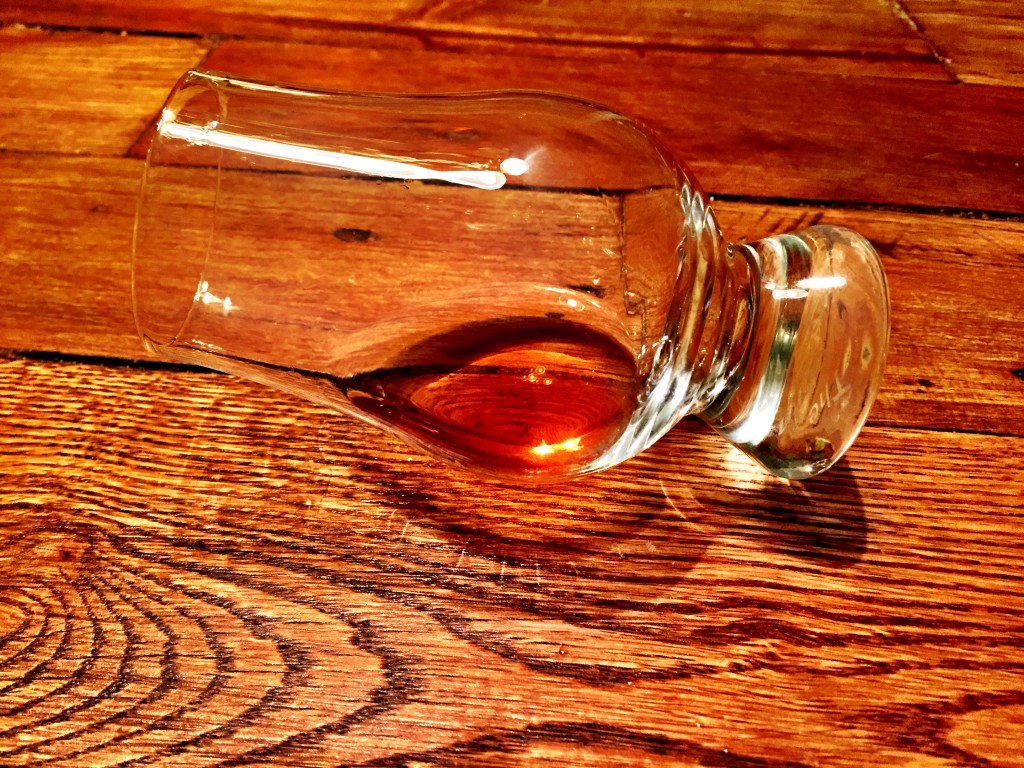Wild Turkey Rare Breed Bourbon (Barrel Proof) - Review
Okay, I have a confession, I've been drinking way too much bourbon and not blogging about it. That being said, lately, I've been enjoying barrel strength (aka barrel proof or cask strength) bourbons instead of your typical off-the-shelf whiskey. What does barrel strength mean? Well that's another whiskey lesson. If you're interested, read on! If you really just want to read the review... then fine, scroll all the way down... rude.

If you go to your local or home bar and do some investigating, you'll find that the common bottle whiskey is somewhere between 80 or 90 proof (40-45% ABV). Remember my post on Willett Family Estate Small Batch Rye, where I talk about the regulations for making bourbon whiskey in the United States? It states that bourbon cannot be more than 62.5% ABV when it enters a brand new charred white oak barrel for aging and cannot be less than 40% ABV when it is bottled.
That being said, there are not many (if any) whiskeys that are aged at 80 proof (40% ABV), meaning your favorite 80-90 proof bottle is usually barreled at over 120+ proof initially. In fact, if your whiskey of choice is that famous TENNESSEE whiskey (notice I didn't say bourbon), the raw grain whiskey was put into the barrel at 140 proof (70% ABV)! This high-proof is necessary because even though the barrels are sealed, the alcohol still evaporates over the aging process. This loss in alcohol is affectionately named, "the Angel's Share" - sound familiar? (looking at you Angel's Envy fans). After aging, this process leaves the finished liquid inside less potent than what was initially poured into the barrel but still very hefty in alcohol level (anywhere from 100 to 135 proof), but what it loses in potency, it makes up for in the deep, rich flavors accumulated from the alcohol making contact with the charred white oak staves for several years.
So how does whiskey reach 80-90 proof? Believe it or not, that cask-strength whiskey is then DILUTED with distilled water. Not only does this process make the whiskey go a lot further (more lower proof bottles), but it actually softens the harshness of the whiskey, resulting in a mellower taste. So why drink cask-strength whiskey? Imagine tasting whiskey in its truest and most concentrated form. You will really be able to taste every aspect of the complexity that goes into the ingredients and aging process of the whiskey. Here, you can sample a master distiller's true skill, as he or she will not be able to hide behind the dilution process.
Here are my favorite ways to enjoy a cask-strength whiskey from greatest to least:
- Neat, in a nosing glass, such as a Glencairn. You'll be able to taste every single flavor profile of the whiskey.
- With a few drops to a splash of chilled distilled water (to your liking) - this opens up the aromas of the whiskey, allowing it to blossom.
- On the rocks - one large ice-cube for slow dilution will suffice but you lose a bit of the aromas from the ice-cube.
- In a cocktail - I do not really recommend this unless you're not a huge fan of your bottle of barrel proof whiskey.
And now, on to the review of Wild Turkey Rare Breed Barrel Proof Bourbon!
Tasting Notes:
Price - $$$$$ (Retail)
Proof - 112.8 / 56.4% ABV
Nose - Strong alcohol initially, upon further nosing, the smell of tobacco, caramel and a hint of corn starts to come thru.
Taste - Spicy with hints of burnt brown sugar and slight citrus but not as much oak as I expected, but the oakiness flavor is still there. Adding a splash of water opens this bourbon up a lot and the burnt brown sugar flavor becomes more like molasses and the sweetness is more pronounced. The finish was long but a little softer with the addition of water and I could taste slight hints of corn and molasses towards the end. Delicious!
Overall - If you've never had a barrel strength bourbon, this Wild Turkey Rare Breed is the perfect price point for you to try this style of whiskey. It is relatively inexpensive and for the price, I found it to be an excellent cask strength bourbon. Definitely try drinking this a number of ways to see which style you'd like better (see above). I prefer mine in a Glencairn glass with about 5 drops of chilled, distilled water to cut the richness of the bourbon. If you'd like to read more about the origin of this 2014 Wild Turkey Rare Breed, make sure to check out the article and review over at Red, White and Bourbon. He has a great write-up on the origin of each batch, his own review and more information about the historic labels.
Score - N/A - From now on, I think I'm going to take the same bourbon review philosophy as Blake from Bourbonr.com and avoid a scoring system in my reviews. In the end, these "scores" are just my opinion and I don't want you to be biased by reviews of "Limited Edition" or expensive bourbons. Therefore, I will let you decide what "score" each whiskey deserves. If my description of the nose, taste and overall experience inspire you to buy that whiskey and score for yourself, then my job here is done. Cheers!

